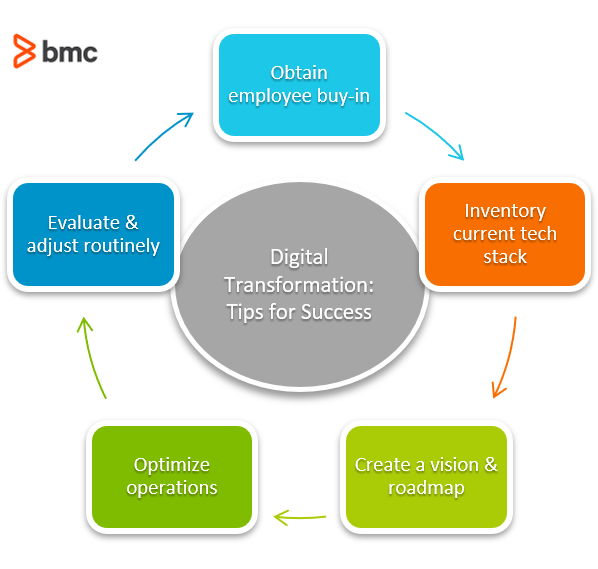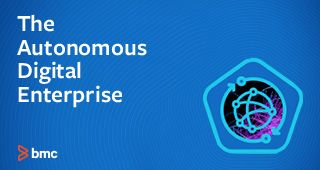Digital transformation (DX) is a catch-all term for modernizing and digitizing IT assets, processes, operations, and business models in an organization.
Initiatives that replace traditional manual tasks with modern technology-driven operations constitute a digital transformation project. The portfolio of technology capabilities enables organizations to harness their assets—people, processes, and systems—to continuously achieve operational excellence and maximize revenue growth and customer engagement.
So, in this article, let’s get inspired with these stories of transformation success—surely, you’ll come away with an idea or two for how to try something new.
(Check out these DX trends.)
4 areas of digital transformation
When organizations embark on a digital transformation journey, they aim to transform at least one of the four key aspects of the business:
- Business model innovation. Conscious technology-driven transformation of the ways that a business generates value and thus gains competitive advantage.
- Experiences. Digital-first interactions between the organization, employees, end-users, partners, and customers.
- Operations. Using technology to optimize operational bottlenecks and identifying opportunities to streamline and facilitate efficient operational workflows.
- Technology ecosystem. Replacing legacy technologies with advanced digital solutions that accelerate scalability, service delivery, information access and embed intelligence into all aspects of the business operations.
Digital transformation isn’t easy: it doesn’t come out of the box, there’s no one-size-fits-all roadmap. This all-encompassing evolution, typically led by the CEO, must be accepted by the entire organization, requiring cross-departmental collaboration and shifts in current business philosophies. This type of drastic change doesn’t occur overnight.
With a wide variety of steps companies can take to initiate—and complicate—this process, a few strategies from mature organizations have been utilized to ensure it is successful.
(Use these metrics to quantify & define DX success.)
Digital Transformation Success Stories
Let’s take a look at some of the popular digital transformation success stories and understand how your organization can employ digital transformation initiatives to gain that competitive edge:
IKEA
For over 80 years, one of the world’s most recognizable furniture and home accessory brands engaged in entirely analogue business operations. The retail giant was competing at scale, against small manufacturers as well as large retail warehouses, for affordable products as it faced a unique set of challenges:
- A complex supply chain pipeline
- Underoptimized goods supply
- Hectic traditional customer shopping experience
During the pandemic, IKEA had closed 75% of its stores for around seven weeks, losing $1.5 billion in revenue, a relatively large sum of money, and yet managed to stay relevant through the crisis.
How did IKEA manage to stay afloat?
IKEA had already prepared for a digital-first retail strategy. Over the years, IKEA revamped its customer journey. Interactions, purchase process, sales support, and guidance were all moved online, waiting for customers to adopt an end-to-end online shopping experience. The entire supply chain was modernized, reengineered, and optimized, driven by data and a customer-centric user perspective.
IKEA has also taken the digital transformation strategy forward by acquiring and testing AR and VR capabilities to further engage customers. The company recently acquired Geomagical Labs to develop AI-enabled AR/VR solutions that let users visualize and model IKEA products in their rooms before they purchase—a simple solution accessible via a smartphone app, pushing customers a little further down the buying journey.
H&M
The fast fashion Swedish brand followed a similar approach toward digital transformation:
- Driving intelligence through data
- Optimizing business operations
- Empowering end-users with a convenient digital-first online shopping experience
In addition to testing voice-enabled apps and AR holograms, H&M recently showcased its new collection event as an entirely virtual and augmented-reality experience.
Instead of holding an on-site event, the AR project offered an innovative digital experience that combined technology, art, and fast-fashion—featuring some of the biggest names in arts and fashion—all safely accessible by a vast audience at their homes.

The Netflix disruption
Classic management and several financial industry experts had written off the possibility of Netflix disrupting Blockbuster’s market share even when Netflix had shipped its billionth DVD. In fact, JP Morgan Securities downgraded Netflix stock citing strong market competition.
Netflix was seen as a logistics and distribution company, until it pursued digital transformation initiatives to outperform the competition. The company focused on analytics, developed its own recommendation engine, Cinematch, that optimized its logistical operations around user preferences and expectations.
At the same time, it also recognized the need to completely innovate its business model and completely decoupled content delivery from traditional off-line logistical channels: the online streaming service with anytime, anywhere access to a wide range of digital content.
The results of this digital transformation initiative were overwhelming to say the least: Blockbuster, a company that once refused to acquire Netflix, was led out of business as Netflix completely seized Blockbuster’s market share. AWS cloud services drove Netflix adoption at an exponential pace: within a decade, in 2017, Netflix reached 100 million subscriptions globally.
Lessons from digital transformation success stories
These success stories demonstrate how every aspect of digital transformation: business model innovation; end-user experience; business operations, and the technology improvements translate into unprecedented business growth and user adoption.
Here are a few quick lessons, tips and findings that can motivate digital transformation initiatives for your business:
- Digital transformation is all about user-centric change. How can you introduce digital technologies to improve customer behavior and employee productivity?
- OpEx vs CapEx. The as a service model of enterprise IT solutions such as cloud infrastructure and analytics is key for startups that need enterprise-grade IT capabilities at affordable cost. Scale as you grow and focus on profit-center innovation instead of cost-center infrastructure investments.
- Obtain buy-in at all levels. Digital transformation is not just a technology change, but a cultural and business change. As such, it impacts all users, employees as well as business executives. A complete buy-in encourages rapid adoption of new digital technologies and motivates productive use of advanced and complex IT solutions.
- Decouple business-enabling operations from traditional analog business routines. Does it help to replace a DVD logistics service with an affordable digital content streaming service?
- Digital transformation is not (just) about technology. Know your customers, business operations and market—but not with the lens of traditional non-digital, classical and half-sighted perspectives: Blockbuster customer surveys showed customers enjoyed visiting the stores!
BMC supports digital transformation
At BMC, we know a thing or two about modernizing legacy processes, systems, and technology—we’ve been helping businesses do business for more than 40 years.
We approach digital transformation as a journey: a journey to become an organization that is digital first, data-driven, and self-serving, enabling transcendent customer journeys. We call this ideal state The Autonomous Digital Enterprise.







